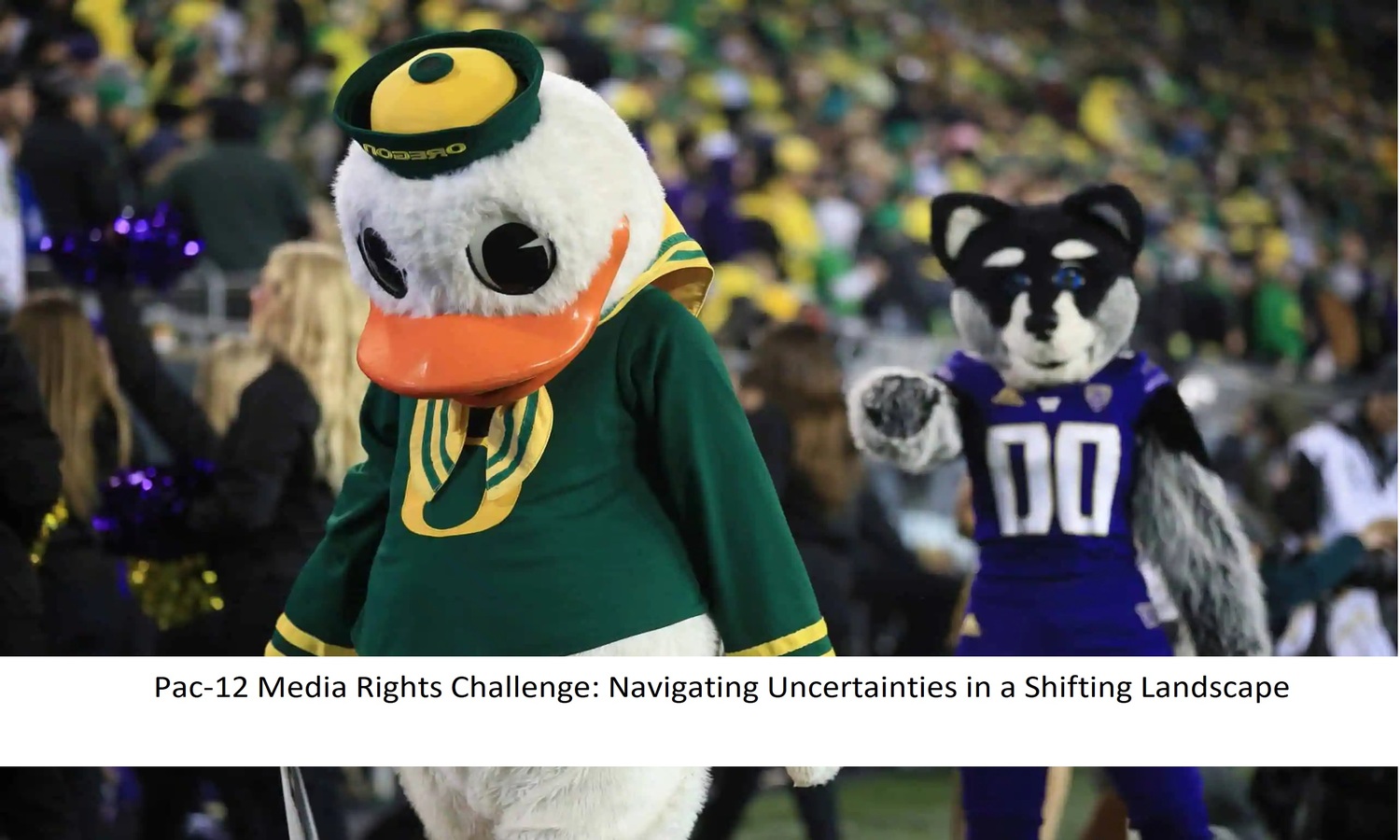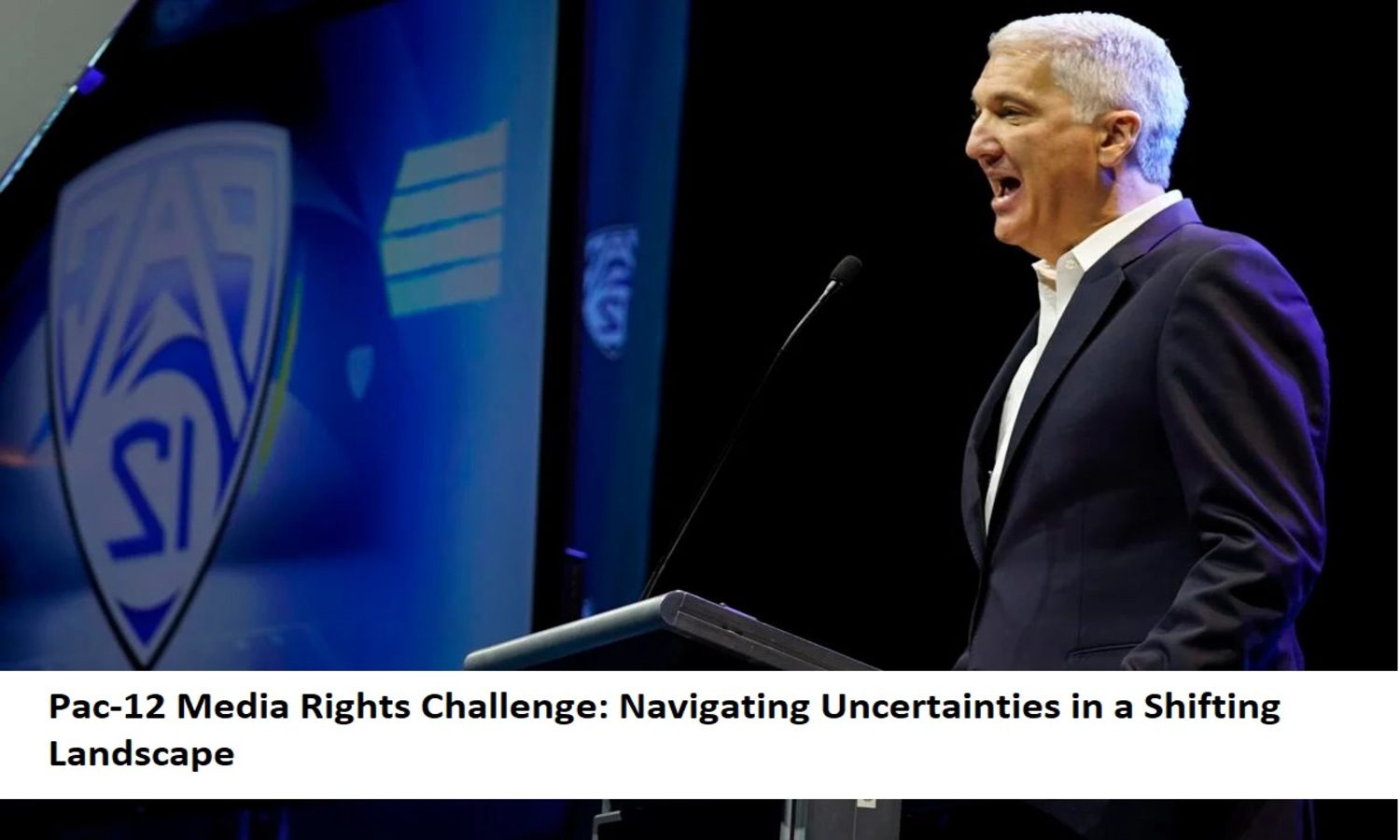Pac-12 Media Rights Challenge: Pac-12 noises are growing scary. They sound like a sorrowful march towards the unknown. Even when it’s not time to say goodbye, it may be wise to prepare the last rites.
Commissioner George Kliavkoff’s story didn’t seem to have any magic answers, hidden plans, or surprises. The Pac-12’s discussions for a new media rights deal were full of problems, the contract was set up to fail, and Kliavkoff’s precarious circumstances delayed the deal.
Kliavkoff had to face a harsh reality in a meeting with Pac-12 presidents when Colorado returned to the Big 12. ESPN said his idea would put most of the league’s content on Apple TV. If subscription standards were satisfied, this would generate more than the Big 12’s $31 million. After the meeting, Pac-12 schools weren’t excited. Instead, it spurred calls for more negotiations.
As the dust settles, the big question is how Arizona, Arizona State, Utah, Oregon, and Washington will handle this information and if they can stomach a media deal that could put the Pac-12 in fifth place in money among major conferences and make games harder to watch than the American Athletic Conference.
Streaming TV is growing more popular. Each conference’s media deal includes streaming, and the simplicity of accessing content via an app is hard to ignore. The NFL streamed Thursday night games on Amazon, MLS moved to Apple, and the NBA’s next TV agreement will likely involve additional streaming. Streaming is over.
College football, which still draws a lot of Saturday viewers, is harder to stream. College sports require consistent funds and a budget. Apple’s money is more significant than subscriber-based advantages that may or may not
be met.
Another major issue is evident. ESPN, ABC, NBC, and Fox will air non-Pac-12 college football on Saturdays. Viewers can switch stations and accidentally find games with a single remote control. Airports and sports bars host games.
ESPN’s “Pac-12 After Dark” contests were Pac-12 favorites. They occurred right after prime-time games. Late-game status provided colleges an opportunity to perform nationally.
Apple TV changes things. Streaming games with an app involves action and planning. Know what you like and find the material to choose a game. This is unlike ordinary TV, where anyone can accidentally find a channel.
Moving has challenges, including the large pay gap, which makes hiring harder. Players desire to play on huge TV networks. The ease of watching live game streams determines their program understanding Pac-12 leaders have a problem now, even if things change.


The Big 12’s pursuit of Arizona indicates that not all Pac-12 institutions have to adapt. Arizona would leave the Pac-12 if Kliavkoff’s plan fails, even though they prefer to stay.
Losing Colorado and possibly Arizona may not affect the Pac-12’s football performance. San Diego State and Boise State might keep the league competitive. Arizona’s departure may worry league watchers.
Arizona State and Utah must determine how to proceed after losing USC and UCLA to the Big Ten and maybe losing Washington and Oregon. The Big 12 may appear safer if it extends a hand.
Keep the Pac-12 from coming apart. Avoid losing a West Coast league or shrinking to the size of the Mountain West. Unless Kliavkoff’s plan has hidden meanings, Colorado won’t be the lone state in this huge exodus.
READ MORE :Gwyneth Paltrow Invitation: A Night at Her Montecito Haven and the Promise of Connection
Our Reader’s Queries
Why can’t the Pac-12 get a media deal?
The Pac-12 missed out on valuable TV spots and funding due to the changing broadcast industry. With less money available, broadcasters focused on a select few top properties, leaving the Pac-12 out of the spotlight.
What media rights does the Pac-12 have?
The Pac-12’s current 12-year, $3 billion rights agreement with Fox and ESPN is scheduled to end in 2024, making it the lone ‘power five’ conference without a lasting deal.
Why is everyone leaving Pac-12?
Presently, the Pac-12 conference comprises Stanford, California, Washington State, and Oregon State. Unsurprisingly, the departures are driven by financial motives. Unlike other major conferences, the Pac-12 lacks a permanent television rights agreement, resulting in the loss of substantial annual revenue for its member institutions.
What will happen to the Pac-12 Network?
Washington and Oregon are set to rejoin the Pac-12 with two other schools, USC and UCLA, who have officially announced their move to the Big Ten by 2024.

